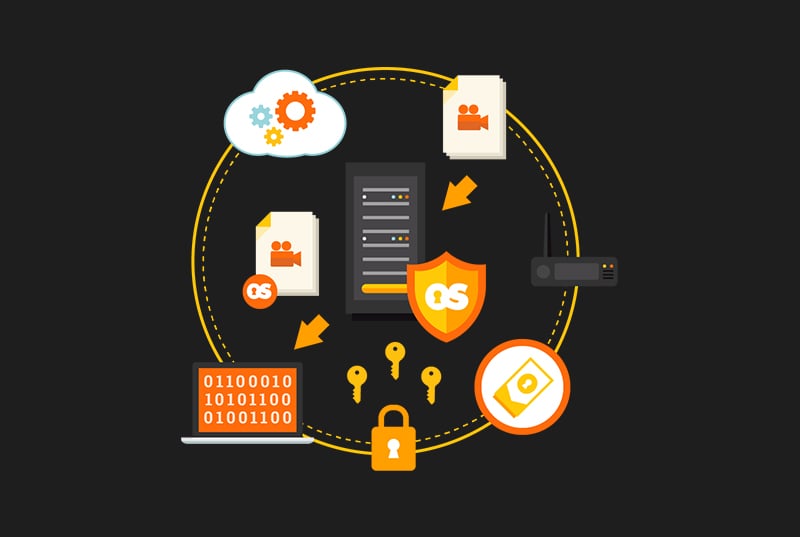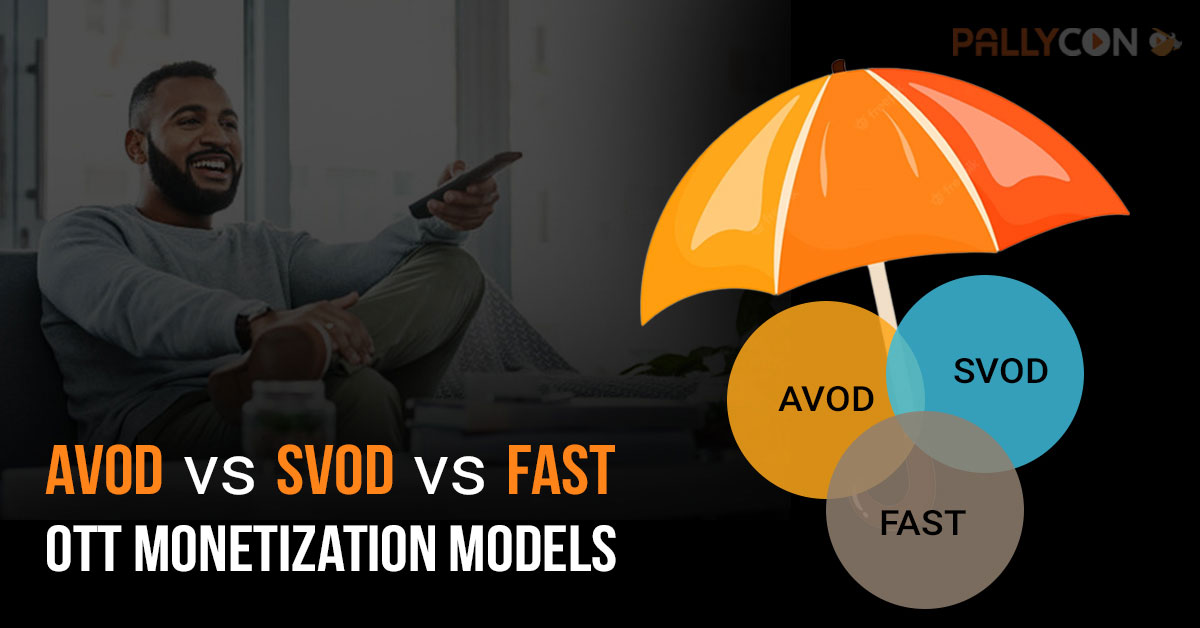[vc_row][vc_column][vc_column_text]In recent years, streaming video services have grown in popularity and profitability. The rise of digital media has given rise to various monetization models, such as Free Ad-Supported Television (FAST), Advertising Video on Demand (AVOD), and Subscription Video on Demand (SVOD) models.
Through their evolution, they have also provided additional channels for pirates to access premium digital content and become susceptible to piracy and unauthorized distribution. The content security framework must be robust, multi-faceted and scalable enough to support different content distribution and ad-generation models to envision a piracy-free content consumption landscape. Let us have a look at the different OTT content distribution models and how content security should be an integral part of an enriching user experience.[/vc_column_text][vc_column_text]
AVOD vs SVOD vs FAST : How are FAST, AVOD and SVOD different?
What is Free Ad-Supported Television (FAST)?
Free Ad-Supported Television (FAST) refers to a model where streaming services offer free video content supported by advertising. This model has become increasingly popular in recent years, with services such as Pluto TV, Roku Channel, and XUMO gaining in popularity. FAST is a great option for viewers who do not want to pay for premium content but are willing to put up with advertisements.
FAST relies on the principle of scale to generate revenue from advertisers. As more viewers consume content, the ad inventory increases, which attracts more advertisers to the platform. Since the advertising revenue is shared with the content providers, FAST offers a win-win solution for all parties involved.
What is AVOD?
Advertising Video on Demand (AVOD), on the other hand, allows viewers to access premium video content for free, with the caveat that they must watch advertisements. This model is a step up from FAST in that the content is of higher quality, and the advertising model is targeted, personalized, and customized according to the user preferences and demographics. YouTube serves as the primary example of an AVOD streaming platform model.
AVOD can be a profitable model for both the service provider and the content providers, as advertising revenue can be split between the two parties. However, the success of AVOD relies on the ability of the platform to attract and retain a large audience, which can be challenging given the competition in the market.
What is SVOD?
Subscription Video on Demand (SVOD) is a model where viewers pay a subscription fee to access premium video content without advertisements. This model has been popularized by services such as Netflix, Amazon Prime Video, and Disney+. SVOD has been successful because it offers viewers exclusive content, personalized recommendations, and an ad-free viewing experience.
SVOD relies on a loyal subscriber base to generate revenue, which is why these services invest heavily in producing original content to keep subscribers engaged. The downside to SVOD is that the subscription fees can be expensive, which can limit the potential audience.
Explore the analysis of VOD piracy in OTT, uncovering the intricacies of online streaming and illegal distribution[/vc_column_text][vc_column_text]
Why FAST and AVOD need Multi-DRM and Forensic watermarking
While the primary revenue model for FAST and AVOD platforms is advertising, they still have an interest in protecting the value of their content and maintaining positive relationships with content owners. Therefore, they employ multi-DRM systems, either in-house or through third-party providers, to strike a balance between content protection and accessibility for their audience.
Implementing multi-DRM solutions allows these platforms to apply encryption and access controls to their content, limiting unauthorized viewing or copying. It helps prevent piracy and protects the rights of content owners. Additionally, multi-DRM solutions enable content providers to enforce usage policies, such as limiting the number of devices that can access the content simultaneously or setting expiration dates for downloaded content.
Forensic Watermarking, is other techniques can be employed to track and identify illicit distribution of content.
Uncover How content security protects TVOD, protecting valuable digital content.
PallyCon’s multi-DRM supports FAST, AVOD and SVOD models that allows your content business to maximize scalability and revenue potential through the OTT video route, all along ensuring a top-notch user experience. The security framework is flexible enough to enforce concurrent streaming experience across devices while providing premium user experience.
In conclusion, the choice of monetization model depends on the goals of the content provider. FAST and AVOD are great options for content providers who want to reach a large audience, while SVOD is ideal for those who want to generate revenue from a loyal subscriber base. Ultimately, the success of any model relies on the quality of the content and the ability of the platform to attract and retain viewers.
Explore the effectiveness of Securing OTT content with Multi-DRM & Forensic Watermarking, providing enhanced protection against unauthorized distribution and piracy
With a mélange of factors determining the business and revenue stream like decoding the complexity of the content consumption landscape and user behavior, addressing looming piracy threats from multiple threat vectors like stream ripping and illegal distribution, multiple content business models like AVOD, SVOD, FAST, the underlying technology is the metamorphosis of a scalable and reliable solution. Take PallyCon’s help in implementing multi-DRM for your content business models today, and focus on growing your business in the exciting OTT arena![/vc_column_text][/vc_column][/vc_row]




